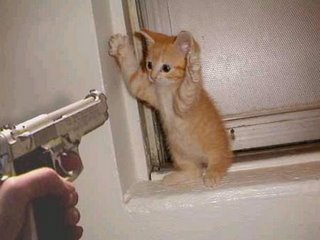
In the last couple of years, several animated films have used animals as major characters. Now I am told by my friends in that business that the studios are looking to buck this trend. They feel that the audience is growing tired of watching animals. I find this baffling. Animal stories did not emerge in the world with the advent of computer-generated animation, and will be with us long after we have moved on to some new technique.
We cannot help but see ourselves in the behavior and habits of animals. How many times have you heard someone say about his or her dog, “He thinks he’s a person”? (A more accurate statement might be, “I think my dog is a person.”)
People constantly equate human and animal behaviors; they always have. It would not be out of the ordinary to hear a person say of someone, “That guy really squirrels away his money.” In fact, here is a short list of such sayings:
• Those guys live like pigs
• She watched me like a hawk
• Men are dogs
• Those guys are really butting heads
• She eats like a bird
• He’s stubborn as a mule
• She needs to come out of her shell
• Those two go at it like a couple of rabbits
• He’s a leech
Creative people have used animals in storytelling for all of human history. The ancient Greeks believed that by observing the way a beehive was organized and following that model you could have a perfect society.
Many tribal peoples believe that one has an animal spirit guide and by following that animal’s lead one might have an easier time at life. Tribal people also believe that we have an animal side to our natures, what Carl Jung calls a “bush soul.” So, not only do we see ourselves in animals, but also we see the animal within ourselves.
But why do we use animals in stories, particularly? Because it is a way to look at ourselves with a little distance.
One of my favorite storytellers, Aesop, used animal stories to illuminate the nature of human beings. If the story of the Tortoise and the Hare were merely what the title suggests few would remember the story. No, this is a story about people -- people “dressed” for the story like a Tortoise and a Hare -- but people nonetheless.
In the American South, during the time of slavery, the slaves told stories of the clever Brer (Brother) Rabbit. These were not stories of rabbits, foxes and bears, but stories about people designed to help them survive their cruel circumstances, stories about slaves outwitting their masters to get what they needed.
George Orwell’s book Animal Farm uses that distance to reveal how people in power can abuse that power. And Art Spiegelman’s brilliant graphic novel Maus uses cats as Nazis and mice as Jews to give the reader just enough emotional distance to see a Holocaust story through fresh eyes.
Less seriously, Daffy Duck provides the distance necessary to notice our greedy natures and laugh at ourselves.
If using animals to tell stories is just a trend, then it is a trend that stretches back to the beginning of time. Maybe Hollywood needs to realize that the animals in their films did not write the stories they are telling. If people are tired of those, then it is not the animals that are to blame.
